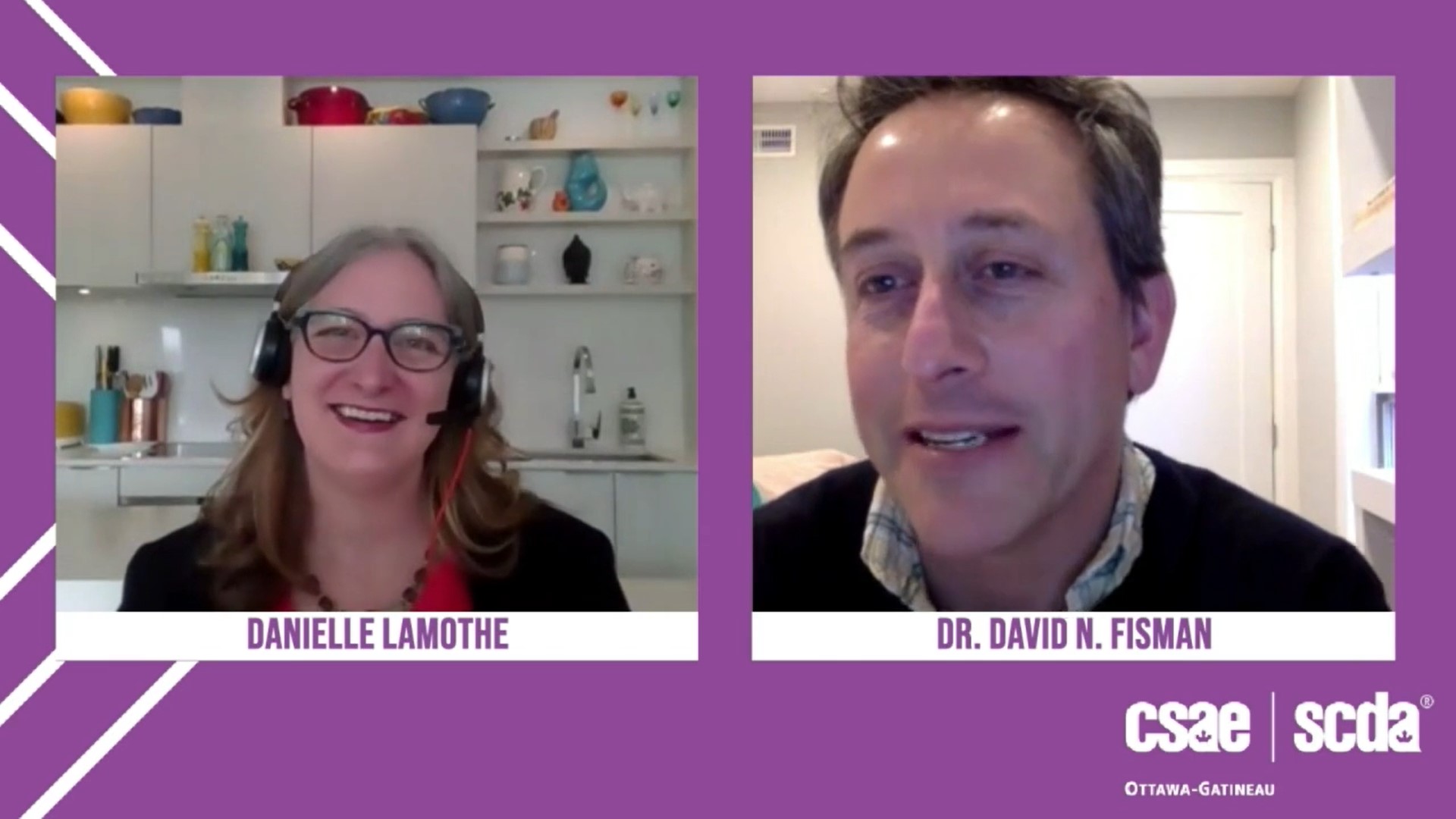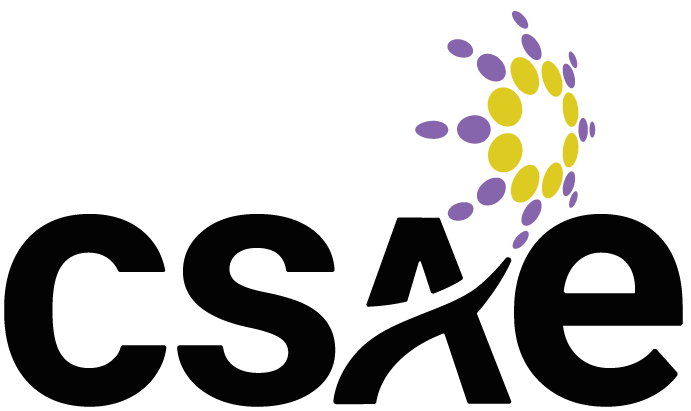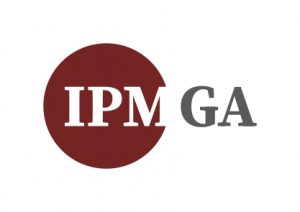The Latest COVID-19 Insights From Dr. David N. Fisman

Epidemiologist Dr. David N. Fisman returned for a fourth discussion with CSAE to share his insights about the COVID-19 pandemic. This time, the well-known expert was the closing keynote speaker at CSAE Ottawa-Gatineau’s Tête-à-Tête on February 10. Here are his tips for walking – not running – towards a post-pandemic reality.
According to Toronto-based epidemiologist Dr. David N. Fisman, the ongoing saga of COVID-19 in Canada is a good news/bad news story.
“We’ve come through what is historically the worst wave of a pandemic, the second wave,” he said during his keynote session, an interview with CSAE’s Danielle Lamothe. “It goes away over the summer and slams you in the fall and winter.”
Since Christmas, global virus reproduction numbers have been declining. Fisman said it’s evident that the second wave of COVID-19 is ending.
“In addition, we have vaccines – Canada is not the first off the starting line, but I think we may be one of the first to cross the finish line. It’s taking a while to ramp up.”
However, he likened the pandemic to a chess game.
“We’ve figured out how to control the virus and bring counts down, but the virus is a player too, and the virus reproduces quickly,” he said.
The next big hurdle will be handling the variants that have mutated from the first strain, which Fisman estimated are 40 per cent more transmissible than the original.
“The dark clouds on the horizon are these variants. We are seeing these novel variants, which we call convergent evolution. I think that’s a process you’ll see playing out over the coming years with this virus, as it does every year with influenza. That’s concerning.”
Fisman said the variants could create a springtime wave, similar to the Spanish flu experience in 1919. However, he expects cases to recede over the summer “if we vaccinate well, at a time when we have little transmission, which can prevent things from taking off in the first place. I think we’re looking at something closer to normal for the fall, even in Toronto.”
He cautioned that as provinces relax restrictions in the face of declining case counts, the new variants could find a footing.
“It’s not the apocalypse, but what is challenging for us in Ontario is that when people go to the intensive care unit (ICU) with COVID, they are there for a long time,” said Fisman. “Whereas we had 300 beds in Ontario occupied by COVID patients in the spring (2020) wave, we’re now sitting around 400 beds occupied (in February 2021). That’s stressed our system, so people are being transported elsewhere for intensive care. That’s not a good place to be, if we get another wave.”
Event Planning in 2021 and Beyond
Fisman is hopeful that travel will resume towards the end of this year. He is in favour of requiring proof of immunity before allowing people to travel, believing “a case can be made for the greater good.”
He pointed out that some places in Canada are doing better than others at virus control, and gatherings will certainly be impacted.
“To a certain extent, you’ll be beholden to the current public health restrictions (when planning events),” he said. “But we can do a lot to keep people safer. Vaccination is part of it. Part of it is also having people go through infection and come out the other side. As we get an increase in immune experience in the population, the virus will subside.”
In addition, event organizers can look at other factors to safeguard the health of participants. Selecting venues that have improved indoor air quality and ventilation for large spaces is important. Fisman said the CDC guidelines on reopening schools also provide good recommendations for event planners.
“Overwhelmingly, the risk from conferences has been super spreader events. They seed epidemics in a bunch of other places,” he explained. He is in favour of implementing rapid testing as an additional layer of safety to rule out the virus in conference participants.
“When thinking about rapid tests, we’re thinking about giving all-clear signals, like testing chlorine in a swimming pool. There’s nothing to see here – we’re fine!”
Fisman doesn’t see masks sticking around post-vaccine. But he said it’s important to educate the public that they are not fully protected the instant they get the shot. “As vaccines trickle out, you probably aren’t protected for a while – public health messaging doesn’t handle those potential risks. You want to role model taking it slow.”
He also emphasized that we simply do not have enough data to predict whether people will need to get a shot every year.
“It’s new and we can’t know about the long-term effects for anyone. We have a culture that likes certainty and we can’t have it, because not enough time has passed. We have to do the best we can do with the info we have on hand, at the time we need to make decisions.
Like the flu, I think it will go from being a pandemic to an endemic disease that gets bad during the winter.”
Fisman said messenger RNA vaccines (also called mRNA vaccines), including the Pfizer and Moderna shots, are “crushing this thing and seem to be less affected by these novel variants and they are easier to update.”
In terms of time between doses, he said, “I wouldn’t worry too much. There is a bit of concern about the second dose coming too soon after the first dose. Four to six weeks is probably reasonable.”
Optimism For The Fall
Fisman encouraged people to remain vigilant and take sensible precautions to continue controlling COVID-19.
“Don’t fall into the trap of thinking it’s gone and we’re in the clear,” he said. He added that outdoor activities remain safer and, for high-traffic areas like restaurants, he endorsed QR code readers, where people can check in and out using their smartphones. He said he himself would still dine on an outdoor patio.
Pointing to successful examples of virus containment in Australia and New Zealand, he said those countries did what they had to do and are now reaping the rewards.
Fisman doesn’t believe this will be the last pandemic of our lifetime because “the drivers of pandemics aren’t going anywhere.” These include the human-animal interface, environmental degradation and “people doing dumb things in labs.” That’s why he is pleased to see Canada taking steps to develop its own domestic vaccine production capability, which will enable a quicker response should another pandemic develop.
Regardless, he sees a brighter outlook for this fall.
“I don’t know this for a certainty, but if I had to put my money down on this, I think we will be in a very different place in the fall.”
That is welcome news indeed. By that time, the world will be 1.5 years into the COVID-19 pandemic.
To watch the full interview, click here.




















